Free Shipping On All Orders Over $150.
Symptoms of Sebaceous Gland Inflammation Causing Black Chin in Cats
Cat chin acne, a common yet often overlooked condition in felines, can cause concern among cat owners. This skin disorder manifests as black spots or bumps on the cat's chin, leading to discomfort for the pet and worry for its caretaker. In this article, we will delve deep into cat chin acne, exploring its causes, symptoms, and effective treatment strategies to ensure your feline friend stays healthy and happy.
Cat chin acne
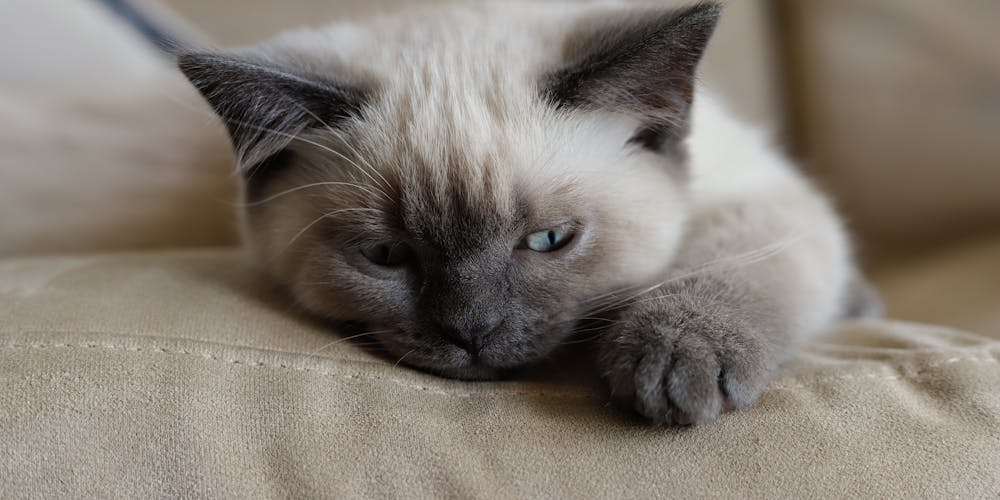
Cat chin acne is a condition that primarily affects the chin area of cats, where sebaceous glands become inflamed, resulting in the appearance of unsightly lesions. This condition is not only cosmetic; it can also lead to discomfort or pain. Understanding the nuances of cat chin acne is essential for prompt diagnosis and effective treatment.
What Is Cat Chin Acne?
At its core, cat chin acne is essentially an inflammation of the hair follicles and sebaceous glands located in the chin area. These glands produce sebum, an oily substance that keeps the skin moisturized. When these glands become overactive or blocked, it leads to the development of acne-like formations.
Cats of all ages can be affected by this condition, but certain breeds with less fur or oily skin are more susceptible. The appearance of black spots on the chin is likely the first sign that something is amiss, prompting many owners to seek veterinary advice.
Why Does It Occur?
The development of cat chin acne is influenced by several factors. Genetics plays a significant role, as some breeds may have a predisposition to skin issues. Additionally, environmental factors such as diet and hygiene are critical in either exacerbating or alleviating the condition.
When cats groom themselves, their saliva can mix with dirt and oil, creating a breeding ground for bacteria. This buildup can lead to the blockage of the sebaceous glands, resulting in inflammation and the formation of pimples.
How Common Is It?
Though not as widely discussed as other feline health issues, cat chin acne is relatively common. Many cat owners may notice the issue but misattribute it to other conditions like allergies or dermatitis. Raising awareness about this ailment can help pet owners recognize early signs and take action before the condition worsens.
Sebaceous gland inflammation in cats
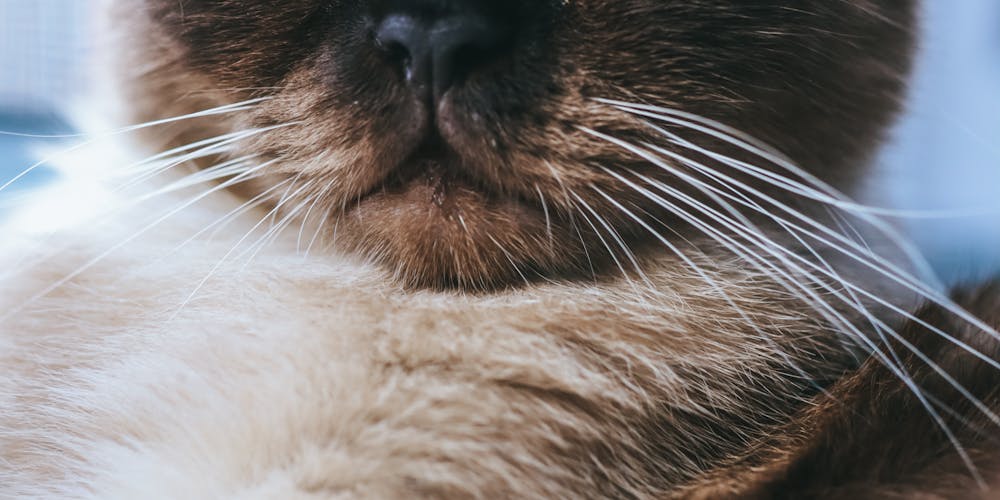
Sebaceous gland inflammation in cats is a critical component of understanding cat chin acne. This inflammation can stem from various underlying issues, contributing significantly to the overall health and well-being of our feline companions.
Understanding Sebaceous Glands
Sebaceous glands are tiny structures found within the skin that secrete sebum, an oily substance responsible for keeping the skin waterproof and lubricated. In healthy cats, these glands function effectively, but disruptions can trigger inflammation and subsequent complications.
When sebaceous glands become blocked or irritated, the secretion of sebum becomes abnormal, leading to sebaceous gland inflammation in cats. This can manifest through various symptoms, including redness, swelling, and the presence of blackheads or lesions.
Factors Influencing Inflammation
Several factors can contribute to the inflammation of sebaceous glands. Stress is a notable contender; much like humans, cats can exhibit physical reactions to emotional stressors, which can affect their skin health.
Diet also plays a pivotal role. A diet lacking in essential fatty acids or containing allergens can lead to compromised skin function. Regularly providing a balanced diet can help maintain skin integrity and reduce inflammation.
Treatments Targeting Inflammation
Addressing sebaceous gland inflammation requires a multifaceted approach. Topical treatments, such as medicated shampoos or ointments, can directly reduce inflammation and promote healing. In more severe cases, oral medications may be prescribed to treat underlying infections or immune responses.
Regular veterinary check-ups are crucial for early detection and management of any skincare issues, ensuring that treatments are tailored to the individual needs of each cat.
Black spots on cat chin

One of the most visible signs of cat chin acne is the emergence of black spots on a cat's chin. These spots can be alarming to pet owners, prompting questions and concerns about the underlying causes and appropriate responses.
The Nature of Black Spots
Black spots on a cat’s chin are often the result of clogged sebaceous glands or hair follicles filled with excess sebum and dead skin cells. This accumulation creates a dark appearance, mimicking blackheads seen in humans.
While these spots may look concerning, they are typically benign and can often be addressed with proper care. Nonetheless, it is essential to monitor their development, as changes in size, color, or texture may indicate an underlying issue requiring veterinary attention.
Monitoring Changes in Appearance
It's crucial to keep a close eye on any changes in the black spots on cat chin. If you notice increased swelling, oozing, or a foul odor, these could be signs of secondary infection or a more serious problem.
Regular grooming can assist in preventing the buildup of oil and debris around the chin, which can help minimize the risk of developing more pronounced acne formations. Using the right tools and techniques is vital, as improper grooming can exacerbate the situation.
Home Remedies for Spot Management
Some cat owners find success with home remedies to manage black spots. Gentle cleansing with hypoallergenic wipes or diluted antiseptic solutions can help keep the chin clean without causing irritation. However, it's essential to consult with a veterinarian before trying any home remedies, as improper treatment could worsen the condition.
Feline acne symptoms

Identifying feline acne symptoms early can lead to better outcomes for your cat's health. Recognizing the signs allows for timely intervention and can prevent further complications.
Common Symptoms of Feline Acne
The hallmark of feline acne includes the appearance of black spots, but there are other symptoms to watch for. Redness and swelling around the chin area may indicate inflammation, while excessive grooming or scratching can be a sign of discomfort.
Some cats may show behavioral changes, becoming more withdrawn or irritable due to the discomfort associated with their condition. Monitoring your cat's behavior closely can provide additional clues about their health status.
Looking for Secondary Symptoms
In some cases, feline acne symptoms can escalate into secondary infections. If your cat exhibits signs such as frequent pawing at the chin, lethargy, or loss of appetite, immediate veterinary consultation is advisable. These symptoms could indicate that the initial issue has progressed, necessitating more intensive treatment.
Importance of Early Detection
Early detection of feline acne symptoms is crucial. The sooner you identify the condition, the easier it is to implement effective treatments and dietary changes. Regular veterinary visits can help catch these symptoms before they develop into more serious problems.
Cat chin dermatitis
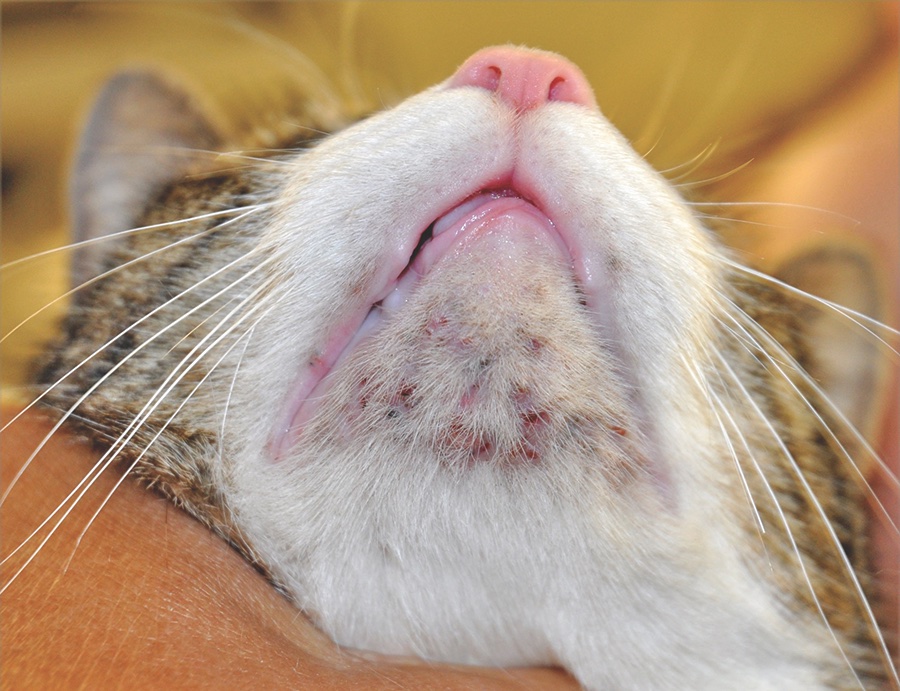
Cat chin dermatitis is another condition that can occur alongside or mimic cat chin acne. Understanding the differences between these conditions is integral to providing appropriate care.
What Is Cat Chin Dermatitis?
Cat chin dermatitis refers to inflammation of the skin specifically on the chin area. While it may resemble feline acne at first glance, dermatitis is generally characterized by red, itchy, or scaly patches rather than black spots.
This condition can arise from various sources, including allergies, irritants, or even stress-induced behaviors such as excessive licking. Identifying the underlying cause is essential for effective treatment.
Symptoms of Dermatitis
Symptoms of cat chin dermatitis can include redness, swelling, and flaking of the skin. Cats may display increased grooming behaviors, leading to further irritation. Watching for these symptoms is important, as they can signal a need for veterinary intervention.
Behavioral changes, such as excessive grooming or changes in appetite, can also indicate discomfort caused by dermatitis. Being observant is key to determining how your cat is coping with their skin condition.
Differentiating Between Acne and Dermatitis
Differentiating between cat chin acne and cat chin dermatitis is crucial for proper treatment. While both conditions may present similarly, the underlying causes and treatment approaches can vary greatly. Consulting with a veterinarian for accurate diagnosis and tailored treatment plans is advisable.
Cat skin infection
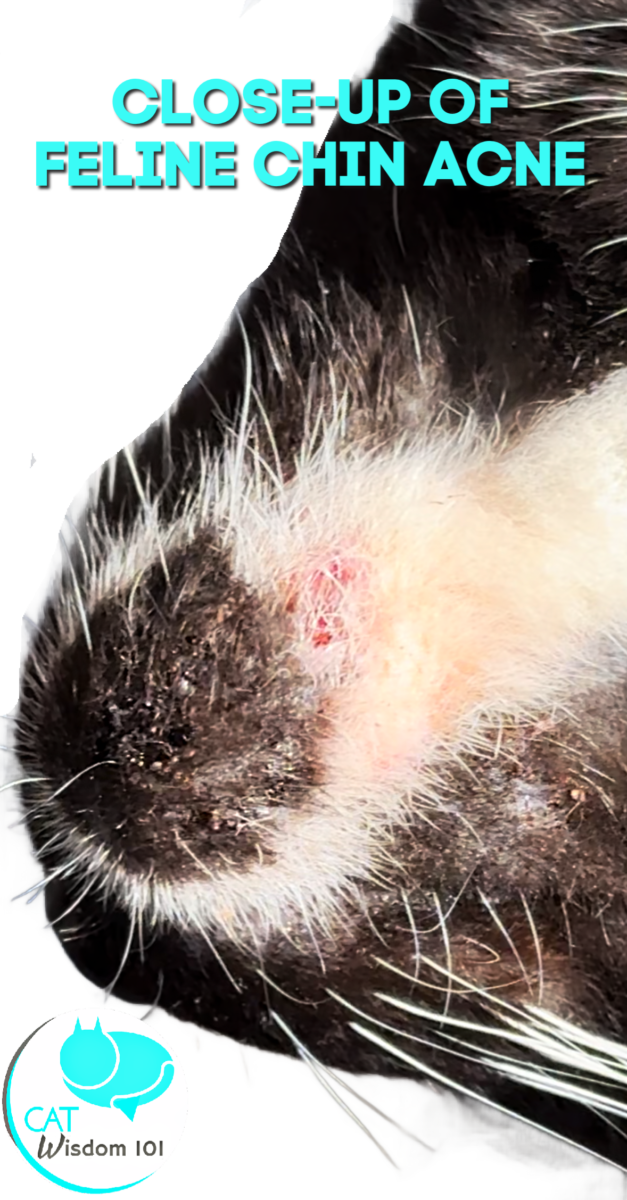
A cat skin infection can be a complication arising from untreated cat chin acne or dermatitis. Understanding the risks associated with skin infections can help cat owners take preventative measures.
Types of Skin Infections
Skin infections in cats can be bacterial, fungal, or parasitic. Bacterial infections often arise when the protective barrier of the skin is compromised, allowing pathogens to enter. Fungal infections, on the other hand, may be linked to exposure to contaminated environments or materials.
Parasitic infections, such as ringworm, can also contribute to skin problems. Understanding the types of potential infections can inform treatment decisions and preventative care.
Signs of Infection
Common signs of a cat skin infection include increased redness, swelling, pus formation, and a foul odor emanating from the affected area. Cats may also exhibit behavioral changes, such as increased irritability or withdrawal.
If you suspect a cat skin infection, it's crucial to consult a veterinarian promptly. Delaying treatment can lead to more severe complications and prolonged discomfort for your cat.
Treatment Options for Skin Infections
Treatment for cat skin infections typically involves topical or systemic medications, depending on the severity. Antibiotics may be prescribed for bacterial infections, while antifungals are used for fungal issues.
Preventative measures, such as maintaining a clean environment and regular grooming, can reduce the risk of infections developing.
How to treat cat chin acne

Knowing how to treat cat chin acne effectively can help alleviate discomfort for your furry companion and prevent future occurrences.
Veterinary Consultation
Before embarking on a treatment plan, consulting with a veterinarian is crucial. They can provide an accurate diagnosis, rule out other skin conditions, and suggest the best course of action based on your cat's specific needs.
Topical Treatments
Topical treatments are often the first line of defense against cat chin acne. These can include medicated shampoos containing benzoyl peroxide or salicylic acid. Such ingredients help unclog pores and reduce inflammation, promoting healthier skin.
Regular application as directed by a veterinarian can yield positive results, improving the overall condition of the skin and minimizing the recurrence of acne.
Environmental and Dietary Modifications
Environmental changes can significantly impact a cat's skin health. Switching to stainless steel or glass bowls for food and water can help reduce bacterial contamination that may contribute to chin acne.
Additionally, a diet rich in omega-3 fatty acids can improve skin health, offering anti-inflammatory benefits that support recovery from acne flare-ups. Consult with your vet regarding dietary adjustments or supplements that can enhance skin health.
Cat sebaceous gland disorder

Understanding cat sebaceous gland disorder is vital to grasping the full picture of cat chin acne. This condition occurs when the sebaceous glands do not function properly, leading to various skin issues.
Types of Sebaceous Gland Disorders
Disorders can range from overactive sebaceous glands producing excessive sebum to underactive glands failing to produce enough oil. An imbalance in sebum production can lead to either greasy skin or dry, flaky patches, both of which can predispose cats to acne.
Recognition of Symptoms
Recognizing the symptoms of cat sebaceous gland disorder can aid in early intervention. Observing changes in the skin's texture, such as greasiness or excessive dryness, can provide valuable insights into your cat's skin health.
In addition, monitoring for signs of irritation, such as itching or redness, can point to possible gland-related issues that might require veterinary evaluation.
Treatment Approaches
Treating cat sebaceous gland disorders often involves addressing the underlying cause. For overactive glands, treatments may focus on reducing excess oil production through medicated cleansers or topical treatments.
For underactive glands, moisturizing agents or dietary adjustments may be recommended to restore balance and promote skin health. Regular follow-up appointments with your veterinarian will ensure the chosen treatment plan remains effective.
Causes of black chin in cats
Exploring the causes of black chin in cats can shed light on why some felines are more prone to this condition than others.
Genetic Predispositions
Genetics plays a significant role in the susceptibility of certain breeds to cat chin acne. Some breeds, such as Persians or Himalayans, may have a genetic tendency toward skin issues due to their unique fur and skin compositions.
Understanding whether your cat belongs to a breed that is predisposed to this condition can help you take proactive measures to mitigate its effects.
Environmental Influences
Environmental factors can also contribute significantly to the development of black chin in cats. Exposure to allergens, pollutants, or irritants can exacerbate skin conditions, leading to the formation of black spots on the chin.
Maintaining a clean living space and minimizing exposure to known irritants can help protect your cat's skin health.
Behavioral Factors
Certain behaviors can also influence the likelihood of developing black chin. Over-grooming or stress-related habits can lead to skin irritation and subsequent inflammation. Ensuring your cat has a stable environment and engaging in interactive play can help reduce stress levels.
Cat skin care tips

Taking a proactive approach to cat skin care is essential for maintaining a healthy lifestyle for your feline friend.
Regular Grooming
Regular grooming is one of the most effective ways to keep your cat's skin healthy. Brushing your cat helps remove loose hairs, dirt, and debris that could clog the sebaceous glands.
Depending on the breed, different grooming tools may be needed to achieve optimal results. Forming a consistent grooming routine not only promotes skin health but also strengthens the bond between you and your pet.
Balanced Diet
A balanced diet rich in essential nutrients plays a vital role in promoting healthy skin. Foods high in omega-3 and omega-6 fatty acids can help maintain skin elasticity and hydration.
Consulting with your veterinarian about appropriate dietary options could make a substantial difference in your cat's overall skin condition and lead to a noticeable improvement in health.
Stress Management
Stress can significantly affect your cat's skin health. Providing a stimulating environment, including toys and safe spaces, can help alleviate anxiety.
Engaging in regular playtime and creating a calm atmosphere can contribute to your cat's emotional well-being, ultimately reflecting positively on their skin condition.
Conclusion
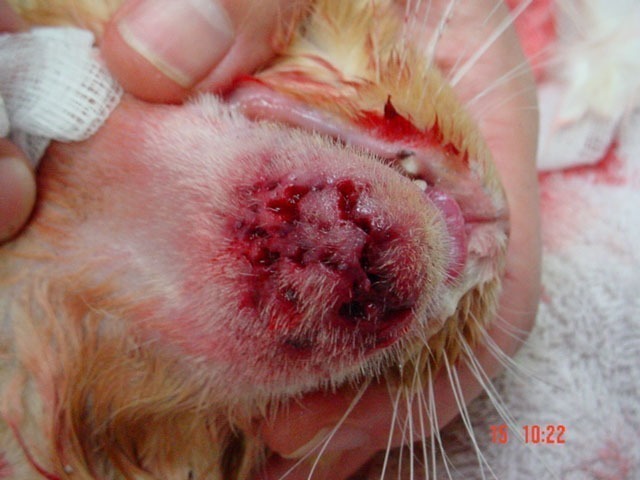
In conclusion, understanding cat chin acne and related skin conditions is key to maintaining your feline friend's health. By recognizing symptoms, taking preventive measures, and implementing effective treatment strategies, you can help alleviate discomfort and promote overall wellness in your cat. Regular veterinary check-ups, proper grooming, and a balanced diet are all essential components of effective cat skin care. With proactive measures, you can ensure that your beloved pet enjoys a long, happy, and healthy life free from the struggles of chin acne and related skin issues.
0 comment
Be the first to comment